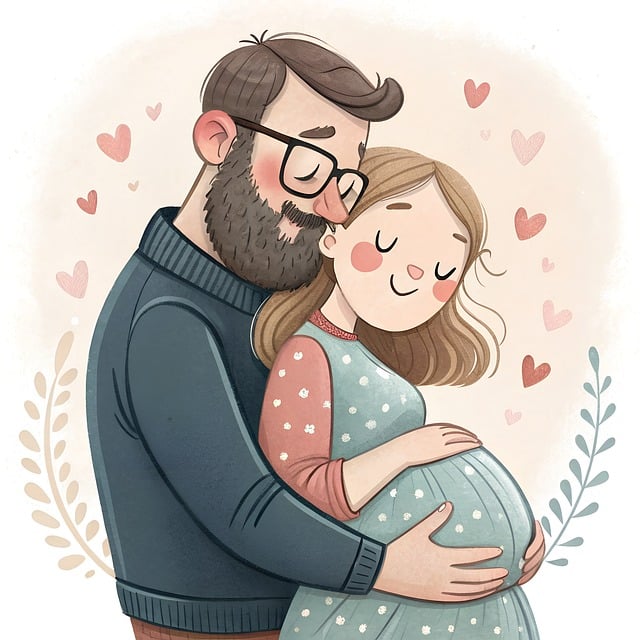At just 17, Sophie was grappling with excruciating periods that often left her fainting at school. After eight long years, she finally received a diagnosis of endometriosis, leading her to make a life-altering choice.
“I always felt something was off,” Sophie recalls. Her menstrual cycle began at 15, but what followed was a relentless battle. “The first day was usually okay, but from day two on, it was a nightmare. I would faint, vomit, and endure intense hot and cold flashes. I often found myself lying on the cold bathroom floor just to cope with the pain,” she shares.
As Sophie entered the workforce, her condition forced her to take frequent time off. “The bleeding was so severe that I could hardly leave my home,” she explains. Despite trying various contraceptives, including the mini pill and an IUD, nothing alleviated her symptoms. An ultrasound revealed polycystic ovary syndrome (PCOS), but doctors dismissed the idea of endometriosis, even after an MRI came back clear. Yet, Sophie was determined to uncover the root of her issues.
“I have a family member with endometriosis, so I suspected I had it too. I learned that not all endometrial tissue shows up on ultrasounds; you often need a laparoscopy,” she says. Frustrated with the NHS, she opted for private care in Surrey. Her first laparoscopy wasn’t conclusive, and the consultant didn’t specialize in endometriosis. “I knew I had to keep pushing for answers,” Sophie added. Her persistence paid off when a second surgery by a specialist confirmed her diagnosis. She had endometrial tissue on her cervix and ovaries, particularly her right ovary.
A third laparoscopy revealed that her condition had deteriorated, with her uterus showing significant inflammation and a large cyst on her left ovary. For many, the journey to an endometriosis diagnosis can span years, partly due to overlapping symptoms with other conditions. The process typically starts with an ultrasound, followed by MRIs and laparoscopy if necessary.
As Sophie approached her 30s, she felt the pressure of time. “I come from a big family and have always wanted to be a mum. But I wasn’t in a relationship and didn’t want to rush into one just to have a baby.” So, she decided to embark on the path of solo motherhood, keeping her plans private for the time being.
She sought a fertility assessment at TFP Fertility Thames Valley, where she felt warmly welcomed. After blood tests and scans, Sophie opted for IVF, starting with selecting a sperm donor. Guided by recommendations, she found a donor who matched her physical traits and shared similar interests, narrowing it down to three options. One donor’s heartfelt letter to his future child resonated deeply with her. “He mentioned he would always be just a phone call away, which really touched me,” Sophie recalled.
Sophie adjusted to the IVF injections, finding hope amidst the discomfort. “At first, it seemed like a huge area to inject, but I got used to it,” she said. Her PCOS resulted in a high egg yield, with the clinic retrieving 32 eggs and creating 13 embryos, all frozen for her recovery. Four months later, an embryo transfer led to a positive pregnancy test, although it ended in a loss when the embryo failed to attach. A second transfer three months later brought better news; this time, the embryo successfully implanted.
When Sophie was 13 weeks along, she shared her news on Instagram, surprising many who had no idea of her plans. “I wanted to keep it private until I was ready to share, avoiding any unsolicited opinions,” she said. In early 2024, her baby girl, Elsie, arrived via Caesarean section. “I had heard C-section recovery could be rough, but honestly, it was nothing compared to the pain of endometriosis. I just breezed through it,” she shared.
Now at home with Elsie, Sophie is adjusting to motherhood, enjoying the support of her family and friends. “Everyone loves her and is thrilled for me. They’re hopeful that my periods may improve now that I’ve had a baby,” she said with a smile.
Looking ahead, 11 embryos remain in storage at TFP Fertility Thames Valley, but Sophie is uncertain about their future. The doctors suggested a total hysterectomy may be an option for better quality of life, though this doesn’t align with her desire for a larger family. “I’d love another baby, but I’m waiting to see how my periods change,” she said.
Reflecting on her experience, Sophie stated, “If Elsie turns out to be my only child, I’ll be okay with that. I would have loved a bigger family, but she is my priority.” The early days of parenthood were challenging, influenced by hormonal changes and the aftermath of IVF, but she feels more settled now. “To anyone dealing with endometriosis, I say hold on to hope. That’s why I chose ‘Hope’ as one of my baby’s middle names.”
You can follow Sophie’s journey on Instagram @solomamajones.
In a similar vein, check out this blog post for more insights on home insemination. And if you’re exploring options for artificial insemination, this kit is a great resource. For comprehensive information about IVF, Hopkins Medicine offers excellent guidance.
Summary:
Sophie, diagnosed with endometriosis, faced severe menstrual pain and made the brave decision to become a solo mum. After multiple surgeries and IVF treatment, she welcomed her daughter Elsie, emphasizing the importance of hope for others facing similar struggles.

